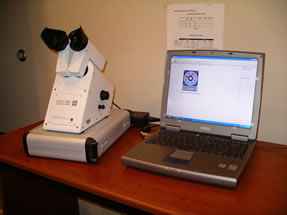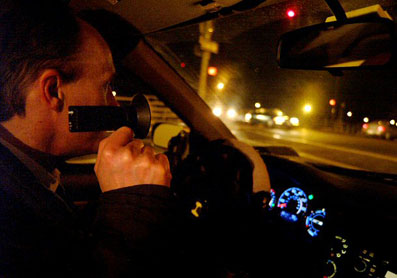Pupil Measurements

The Procyon P2000SA Pupillometer
Evaluation of your pupil size is an essential part of the pre-operative evaluation at Flaum Eye Institute Refractive Surgery Center . Patients with large pupils who do not have an appropriately design treatment are at risk for having night vision problems such as glare and halos after refractive surgery.
During the daytime, our pupils tend to become smaller in response to light. At night, they enlarge, or dilate, to allow more light to enter the eye. This dilation is what can cause the glare and halos if an inadequate area of the cornea is treated with the laser.
To avoid this risk, Dr. MacRae must know that he can treat a wide enough area of your cornea which encompasses your pupil while dilated in the dark. He and his team have conducted real-world testing of light levels while driving at night to determine the optimal level of light needed to simulate night driving when testing your pupil size. During your evaluation, the staff at Flaum Eye Institute Refractive Surgery Center will measure your pupil size four different ways under dim and bright conditions. These measurements will then be analyzed with your prescription and corneal thickness to determine if treatment would be safe for you and would avoid creating night vision problems.

Dr. MacRae measuring night driving light levels
The Zywave Wavefront Sensor provides an extremely accurate measurement of pupil size under conditions that simulate night driving on a dark country road. Dr. MacRae has done field research with an accurate light meter to confirm this. All patients being evaluated at Flaum Eye Institute Refractive Surgery Center have Zywave testing to assess pupil size and the optical quality of their visual system.
We have recently added the latest technology to analyze pupil size, the Procyon P2000 SA pupillometer. The Procyon measures, in real-time, the size of both pupils with an infrared video system. In only two seconds, the Procyon will capture ten images of the pupil and analyze the average diameter and degree of change. We measure pupil size under three differing light conditions: Bright, dim, and totally dark.
By following this very strict protocol, Dr. MacRae knows that he can treat patients confidently, significantly reducing the risk of inducing glare and halos.